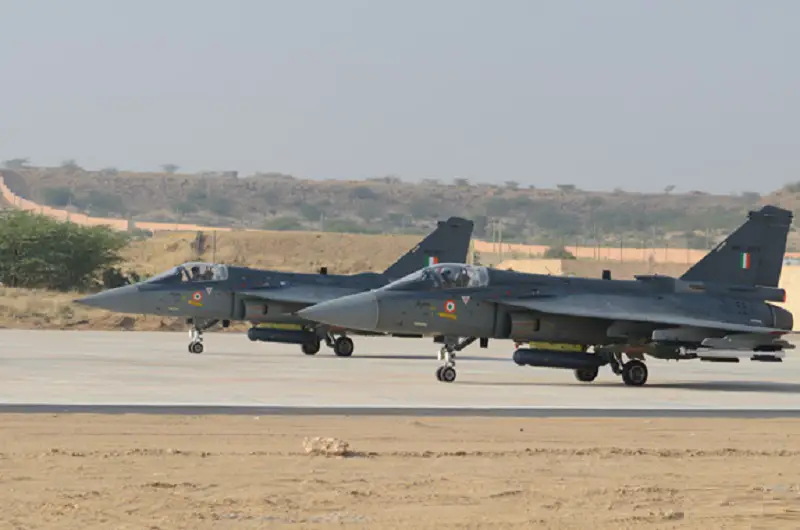In a significant development towards Tejas Mk1A programme, the Digital Fly by Wire Flight Control Computer (DFCC) was integrated in prototype LSP7 and successfully flown on 19th Feb 2024. DFCC has been indigenously developed by the Aeronautical Development Establishment (ADE), Bengaluru for the Tejas – Mk1A. Digital Fly by Wire Flight Control Computer features Quadraplex Power PC based Processor, high speed autonomous state machine based I/O controller, enhanced computational throughput and complex on-board software complied to DO178C level- A safety requirements. All critical parameters and performance of the flight controls were found satisfactory. The maiden flight was piloted by Wg Cdr Siddarth Singh KMJ (Retd) of National Flight Test Centre.
Aeronautical Development Agency, under the aegis of Department of Defence R&D and Ministry of Defence has successfully type certified Tejas-Light Combat aircraft (LCA). Indian Air Force has already operationalised Tejas LCA Mk1. The improved version of the aircraft, Tejas MK1A features advanced mission computer, high performance Digital Flight Control Computer (DFCC Mk1A), Smart Multi-Function Displays (SMFD), Advanced Electronically Scanned Array (AESA) Radar, Advanced Self-protection Jammer, Electronic Warfare Suit etc. Raksha Mantri Shri Rajnath Singh complimented joint teams from DRDO, IAF, ADA and industries involved in the development and successful flight test of this critical system for Tejas Mk1A and termed it as a major step towards Atmanirbharata with reduced count of special imports.

The HAL Tejas (Radiance) is an Indian single engine, delta wing, light multirole fighter designed by the Aeronautical Development Agency (ADA) in collaboration with Aircraft Research and Design Centre (ARDC) of Hindustan Aeronautics Limited (HAL) for the Indian Air Force and Indian Navy. It was developed from the Light Combat Aircraft (LCA) programme, which began in the 1980s to replace India’s ageing MiG-21 fighters but later became part of a general fleet modernisation programme. In 2003, the LCA was officially named “Tejas”. It is the smallest and lightest in its class of contemporary supersonic combat aircraft.The Tejas is the second fighter developed by HAL with the intention of attaining supersonic performance, after the HAL HF-24 Marut. The Tejas achieved initial operational clearance in 2011 and final operational clearance in 2019.
The first Tejas squadron became operational in 2016, as No. 45 Squadron IAF Flying Daggers was the first to have their MiG-21s replaced with the Tejas. Currently there are three production models of the Tejas – the Mark 1, Mark 1A and a trainer version. The IAF has ordered 32 Mark 1s, 73 Mark 1As and 18 Mark 1 trainer aircraft. Eventually the IAF plans to procure a total of 324 aircraft in all variants, including the Tejas Mark 2 which is currently under development. The Tejas Mark 2 is expected to be ready for series production by 2026. As of 2022, the indigenous content in the Tejas Mark 1 is 59.7% by value and 75.5% by the number of line replaceable units. The indigenous content of the Tejas Mk 1A is expected to surpass 70% in the next four years.















